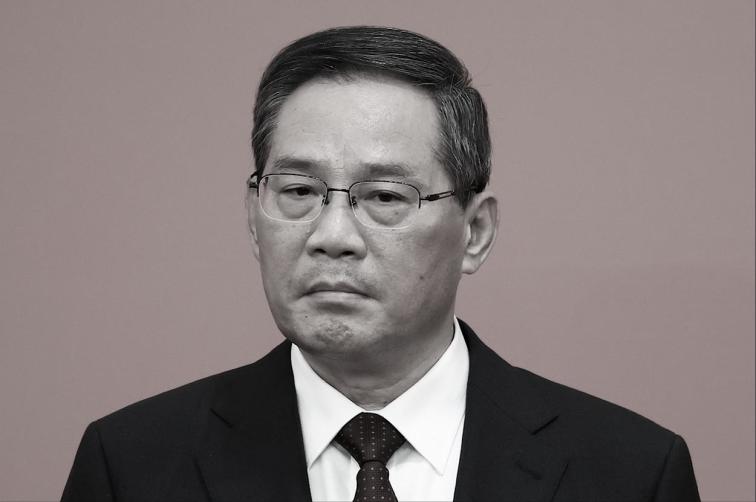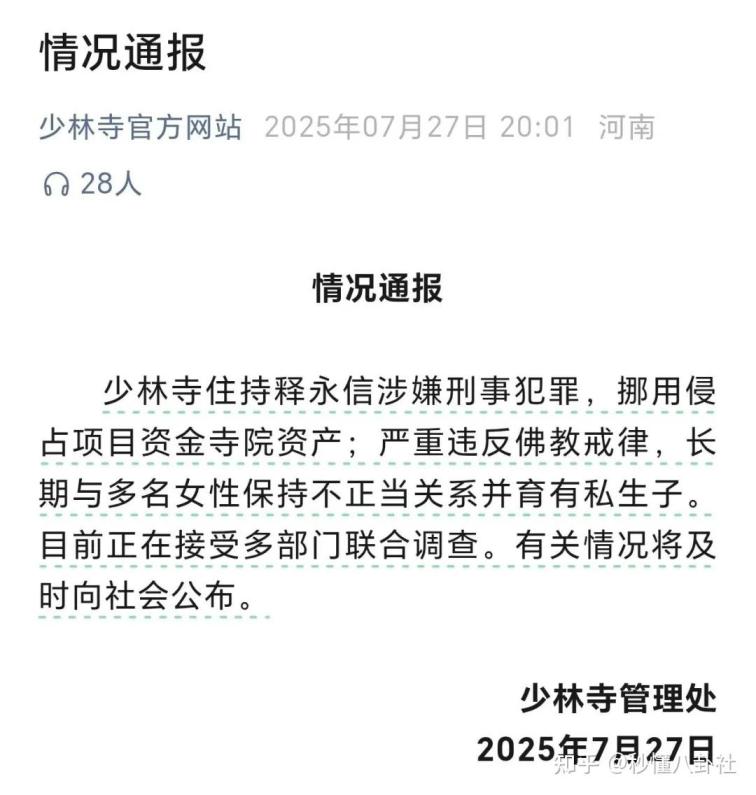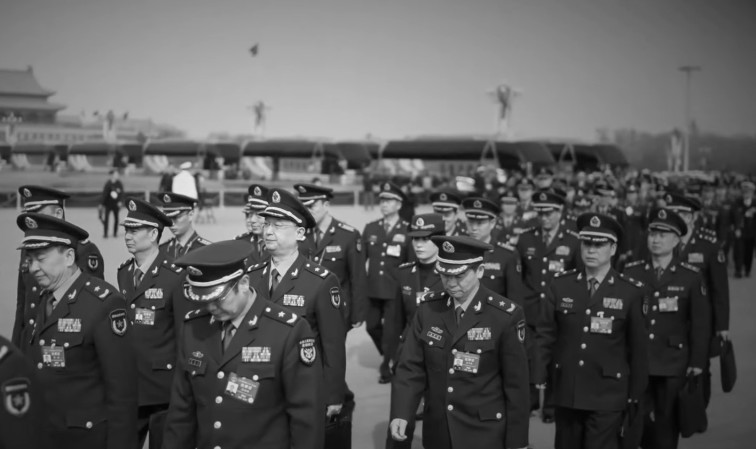March 10, 2025, Beijing Great Hall of the People—A security guard stands at the entrance before the closing ceremony of the Chinese People's Political Consultative Conference. (WANG ZHAO/AFP via Getty Images)
[People News] On August 22, Wang Lixia, Deputy Party Secretary of Inner Mongolia and Chairman of the Autonomous Region government, was suddenly announced as having been dismissed and placed under investigation. Former Inner Mongolia official Du Wen, now overseas, had already revealed in June that the so-called “Queen of Outfits”—who allegedly spent 100 million yuan annually on clothing—was taken away for questioning by the CCDI.
1. Wang Lixia’s Fall
Public records show Wang Lixia, an ethnic Mongol born in June 1964, became Vice Governor of Shaanxi Province in 2013, where she gained a reputation for extravagance. Zhao Leji once served as Party Secretary of Shaanxi, and Wang was closely associated with him.
Du Wen alleged that the 2025 round of central inspections in Inner Mongolia was specifically to investigate Wang Lixia. He has repeatedly exposed her alleged crimes and claimed she persecuted him professionally and economically. Having lived and worked in Inner Mongolia, Du Wen is believed to have detailed knowledge of Wang’s background.
According to Dajiyuan analysis, Wang’s predecessor, Bu Xiaolin, was forced into semi-retirement after attempting to impose Mandarin textbooks, sparking mass protests. With the CCP’s 4th Plenum scheduled for October, turbulence in officialdom is expected to continue.
2. Zhao Leji’s Waning Power
Wang Lixia’s downfall comes just two months after Zhao Leji himself visited Inner Mongolia to support her. Journalist Jiang Wangzheng revealed that on August 17, Inner Mongolia’s Development and Reform Commission Director Gong Mingzhu was investigated, and Wang was detained the following day.
Gong Mingzhu, an ethnic Mongol born in 1966, was said to have formed a profit chain with Wang Lixia to funnel wealth to Zhao Leji.
Rumours abound that Zhao’s closest lieutenant was Luo Yulin, who fell in May 2023 and reportedly died in prison. Articles such as The Truth of a Century have linked Zhao Leji to scandals like the “Shaanxi Trillion-Yuan Mining Rights Case” and illegal mining in Qinghai.
Many of Zhao’s associates have already fallen: former Shaanxi Governor Zhao Zhengyong, Shaanxi Provincial Standing Committee member Wei Minzhou, deputy secretary of the provincial Political-Legal Committee and 610 Office chief Wu Xincheng, Vice Governor Feng Xinzhu, Standing Committee member and secretary-general Qian Yin’an, Vice Governor Chen Guoqiang, Vice Chairman of the provincial CPPCC Zhu Zuoli, and others. With Wang Lixia’s network collapsing, the question arises: Is Zhao himself next?
Wang Jizhou, founder of YiHe Capital, argued that Xi Jinping is employing the tactic of “cutting off the skirts”—removing all of Zhao’s associates. If so, could Zhao himself escape investigation?
Moreover, Zhao oversaw a scandal that has long embarrassed Xi’s family. While Party Secretary of Shaanxi, Zhao supervised the construction of Xi Zhongxun’s extravagant mausoleum, which rivals the First Emperor’s tomb. Mishandled land compensation during the project led to public outrage, deaths, and made the mausoleum a hotspot for petitions and suicides. Japanese journalist Akio Yaita reported that Xi’s family members must visit the grave secretly, while police block petitioners from distributing flyers.
During the 2025 Two Sessions, Zhao Leji skipped the closing session of the NPC, citing a respiratory infection, only to reappear three days later. Analysts suggested this may have been a calculated slight at Xi Jinping, reinforcing the view that Zhao is a thorn in Xi’s side.
Some speculate Xi’s anti-corruption campaign would never reach a Politburo Standing Committee member—but then how did Li Keqiang die so suddenly? Could Zhao also meet a mysterious end?
3. Xi Jinping’s Road to “Enthronement”
Since 2025, seven provincial- or ministerial-level officials have been purged: former Tibet Chairman Qi Zhala, ex-Hubei Party chief Jiang Chaoliang, Shanxi Governor Jin Xiangjun, Guangxi Chairman Lan Tianli, ex-FDA chief Bi Jingquan, former Ningxia Chairman Liu Hui, and now Wang Lixia. Four were senior figures from ethnic minority autonomous regions.
On the surface, these are “anti-corruption” moves. But Harvard professor Stephen Kotkin has argued that in communist regimes, murder is a necessary mechanism of rule. Since a dictator cannot control all people directly, he relies on subordinates. Once those subordinates acquire their own networks of followers, resources, and wealth, the dictator feels threatened and eliminates them, both to preserve power and to instil fear nationwide.
Kotkin believes Xi Jinping has entered a Stalin-style purge phase. In eliminating rivals, Xi creates new enemies and fuels resentment, forcing him to continue the cycle of repression until his own death.
Journalist Wen Ming observed that throughout 2025, Xi Jinping has been touring temples: in May, the White Horse Temple and Longmen Grottoes; in June, Qinghai’s Hongjue Temple; in July, Yangquan’s Yaolin Temple and Qingliang Temple in Shanxi; and in August, Tibetan Buddhist sites.
Commentator “Jili Xiaoshimei” analysed through the I Ching that Xi hopes to crown himself emperor, emulating ancient rulers who invoked religion to claim divine mandate. His August 20 Tibet trip, in this view, was a demonstration of physical vigour and a signal of intent to remain in power through the CCP’s 21st Congress.
If Xi truly intends to “become emperor,” further purges are inevitable. Figures like Zhao Leji, who voice resistance, may well be the next to be eliminated.
(First published by People News) △











News magazine bootstrap themes!
I like this themes, fast loading and look profesional
Thank you Carlos!
You're welcome!
Please support me with give positive rating!
Yes Sure!